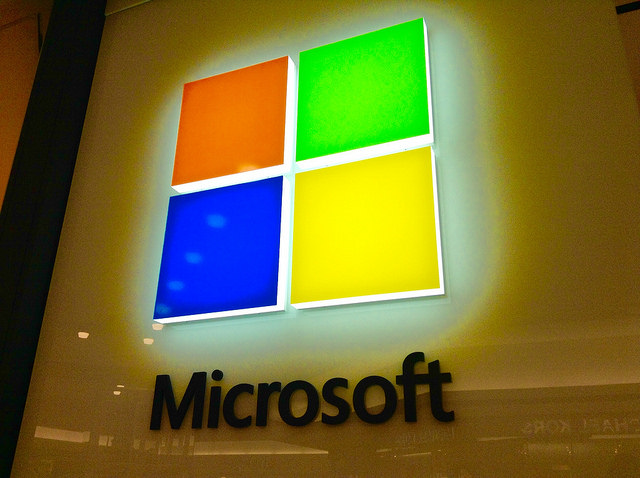Microsoft’s move to Subscription and SaaS

Microsoft were one of the first ‘mega vendors’ to move towards a subscription cloud modelling of licensing metrics. The introduction of Office 365 (O365 for the purpose of this article) took Microsoft software in a new, unchartered direction. So, why have Microsoft moved towards this licensing metric, why are they moving their operating system to a subscription model, and what does the future hold for Microsoft licensing?
Why have they moved towards this model?
Cloud based subscription licensing is becoming the norm for software vendors when it comes to licensing their products. It helps them to gain more revenue, have better visibility over their customers, and have more control over their customer base. It makes perfect sense for the vendors as it ensures that they are fully paid for the use of their software, as pirating within cloud-based subscription licensing hasn’t been cracked yet. However, there are very smart people out there, and it may only be a matter of time before we hear of someone using O365 illegally.
Windows as a service
Microsoft recently announced that Windows 10 would be the last fully packaged product that they will release. From then onwards, it will be more of a SaaS product, with regular cloud based updates. Windows 10 will be fully compatible with tablets and desktop products, with the new operating system being free for one year for Windows 7 and Windows 8/8.1 customers. Interestingly, to further emphasise our point of Windows being a service, Microsoft have reportedly trademarked the term ‘Windows 365’ which suggests in the future they will align the service to Office 365.
Anyway, back to Windows as a Service. Price points are yet to be established for how much it will cost new customers, or customers still running older operating systems (such as Windows XP), however as we’ve mentioned it will be a free upgrade for those personal users with a valid license. It is not a free upgrade for businesses (funnily enough!). Microsoft has stated that Windows 10 will be the last version of Windows, with ‘on-going and regular updates for subscribing users’.
So, in effect there are no more perpetual Windows licenses as of Windows 8.1. We are assuming that like other subscription based licenses, that those who do not renew their Windows license will stop receiving support and regular updates of Windows. This includes major and minimal updates and releases, and could cause issues with compatibility with software, security and compliancy.
It has been claimed that Microsoft have moved towards this licensing metric for Windows thanks to the previous relative fail of the past 3 releases of Windows. Vista, 8 and 8.1 have been deemed a flop due to their difficulties in integrating within business environments, a lack of features and horrible layout (Vista), and effectively having a mobile device OS on a desktop (Windows 8/8.1). Having Windows as a Service will allow Microsoft to regularly update their OS, and help provide customers with the most up-to-date version of the software.
Moving Windows towards a subscription model could pave the way for other OS to follow suite. It also begs the question how OEM (Original Equipment Manufacturer) licenses will work. I assume Microsoft will provide pre-installed Windows that has all the features for one year, before forcing the customer to renew the license. Does this, in effect, mean that it will no longer be considered an OEM license?
The future of Microsoft licensing
It wouldn’t be a shock to see all or the majority of Microsoft licenses moving towards some form of subscription model, as it makes more logistical sense for the software vendor. Software that is in the datacentre may be the last to move towards such a model, as the licensing metrics for those products are a lot more complex and having a yearly subscription would be hard to implement.
For example, if a user already has Windows Server 2012 on a perpetual model, why would they then suddenly move towards a non-perpetual subscription for the same license? Microsoft would have to introduce a new version of Windows Server (which they are, Windows Server 2016) and make it a subscription only licensing model. In order for Microsoft to move more applications to a subscription model, they need to follow the approach they made with Office 365. However, you can still purchase Office 2013 as a perpetual license.
Personally, we believe that Microsoft were ‘testing the waters’ with the cloud based subscription model, to see if it works for both them and their customers. We believe that the O365 premise works, and that there is no reason as to why Microsoft wouldn’t move the majority of their products over to that licensing model.
The ITAM Review Microsoft Events;
We are delighted to announce that we are hosting two Microsoft events later this year; one in London and one in New York!
If our previous Oracle, IBM and SAP seminars are anything to go by, these will be information packed days that will help you understand and manage your Microsoft licenses better, and understand the best forms of defence against audits.
To book your place for these events, please see the links below.
London – https://marketplace.itassetmanagement.net/event/ukmicrosoft2015/
New York – https://marketplace.itassetmanagement.net/event/usamicrosoft2015/
- Tags: licensing · Microsoft · MicrosoftLM · SaaS · Subscription · windows
